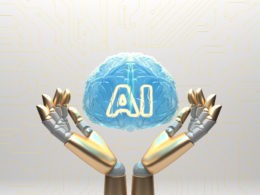If you talk to anyone working in customer support today, you’ll notice a shared sentiment: the old way of managing help centers just doesn’t hold up anymore. The traditional model — static FAQs, manually updated articles, scattered internal notes — was fine when companies were smaller and customers had lower expectations. But now that users expect answers quickly and support teams must do more with less, the cracks are impossible to ignore.
Over the past few years, a noticeable shift has taken place. Support leaders aren’t just looking for tools that help them “keep up.” They’re searching for smarter, more adaptive systems that lighten the load, reduce repetitive tasks, and give customers a smoother experience. In other words, they’re moving away from the help centers of the past and adopting a different kind of support engine entirely.
The Problem With Yesterday’s Help Centers
For many teams, their help center is one of those things that “works” only because someone is constantly wrestling with it behind the scenes. Articles fall out of date quickly. Search is unreliable. Support agents create shadow documentation just so they can find answers faster. And because updates require time that nobody really has, customers wind up submitting tickets for things they should have been able to solve on their own.
It’s not a failure of intention; it’s a failure of structure. Help centers were originally built for a slower, more predictable world — one where product releases didn’t happen every week and customer expectations weren’t shaped by instant-response services. Today, a help center can’t just be a static repository of information. It needs to move as quickly as the team does.
The Shift Toward Smarter Systems
Modern support teams have started gravitating toward solutions that feel less like “documentation storage” and more like dynamic engines that amplify their work. These teams want systems that help them create content, not just host it. They want search features that understand the real meaning behind a user’s question, not just the keywords. And above all, they want technology that keeps their help center relevant and accurate without requiring a daily time sacrifice from an already stretched support staff.
This shift isn’t about replacing people — it’s about unlocking time and clarity. Teams are beginning to realize that the smartest help centers are those that quietly handle the maintenance and heavy lifting in the background. Instead of assigning someone the never-ending task of rewriting articles and reorganizing categories, teams are adopting tools that help them focus on what they do best: identifying customer needs and solving the problems that actually require human judgment.
Why Support Teams Are Making the Switch
There are several reasons for this momentum, but three stand out above the rest.
1. They’re tired of rewriting the same answer 40 times.
It’s almost a universal experience: support agents answering the same question repeatedly, in different words, across email, chat, and social channels. Smarter help center tools make it dramatically easier to convert recurring questions into polished, up-to-date content — often right at the moment when the question is identified.
2. Customers expect better search — with or without humans.
When a customer types, “Why won’t my payment go through?” they’re not looking for an article titled “Billing Issues Overview.” Modern help centers are able to match intent rather than guessing based on keyword overlaps. This leads to fewer ticket submissions, fewer frustrated customers, and fewer escalations to the support team.
3. Maintaining documentation shouldn’t be a full-time job.
Support teams need systems that help keep articles current as products evolve. Tools that analyze outdated content, suggest updates, or highlight missing topics are becoming less of a luxury and more of a necessity.
This is where many teams have found an edge with an AI knowledge base, though the real magic comes not from the phrase itself, but from the way these tools seamlessly integrate into the daily rhythm of support work.
The Smartest Help Centers Are Becoming Support Partners
One of the most interesting changes is how modern help centers now play an active role in the support workflow. When a customer starts to fill out a contact form, relevant articles can surface automatically. When an agent is responding to a ticket, similar past cases or documentation appear beside their conversation. And when something in the product changes, the help center can flag articles that need attention long before customers stumble into outdated instructions.
Instead of being the last place a team checks for information, help centers are becoming a central operational hub — supporting self-service, onboarding, customer education, and even internal communication. This shift has blurred the line between “help center” and “support infrastructure,” and most teams would say that’s a good thing.
What This Means for the Future of Support
The move toward smarter help centers isn’t just a trend — it’s a symptom of a broader change in how teams view customer support. People no longer see documentation as a static library to be maintained; they see it as a living system that must evolve as quickly as the customers using it. And the tools that can match that pace are the ones gaining ground.
In the coming years, the help center will likely become even more embedded in the customer journey. It will anticipate needs instead of reacting to them. It will help support teams identify issues before customers report them. And it will continue to shift routine tasks away from humans so they can focus on the conversations that matter most.
In Closing
Support teams aren’t abandoning help centers — they’re redefining them. They’re choosing systems that grow, adapt, and stay accurate without demanding constant babysitting. They’re embracing tools that remove friction for both agents and customers. And above all, they’re adopting a smarter, more modern approach to supporting the people who rely on them.
If the old help center was a library, the new help center is a partner — and teams are finding that once they switch, there’s no going back.












